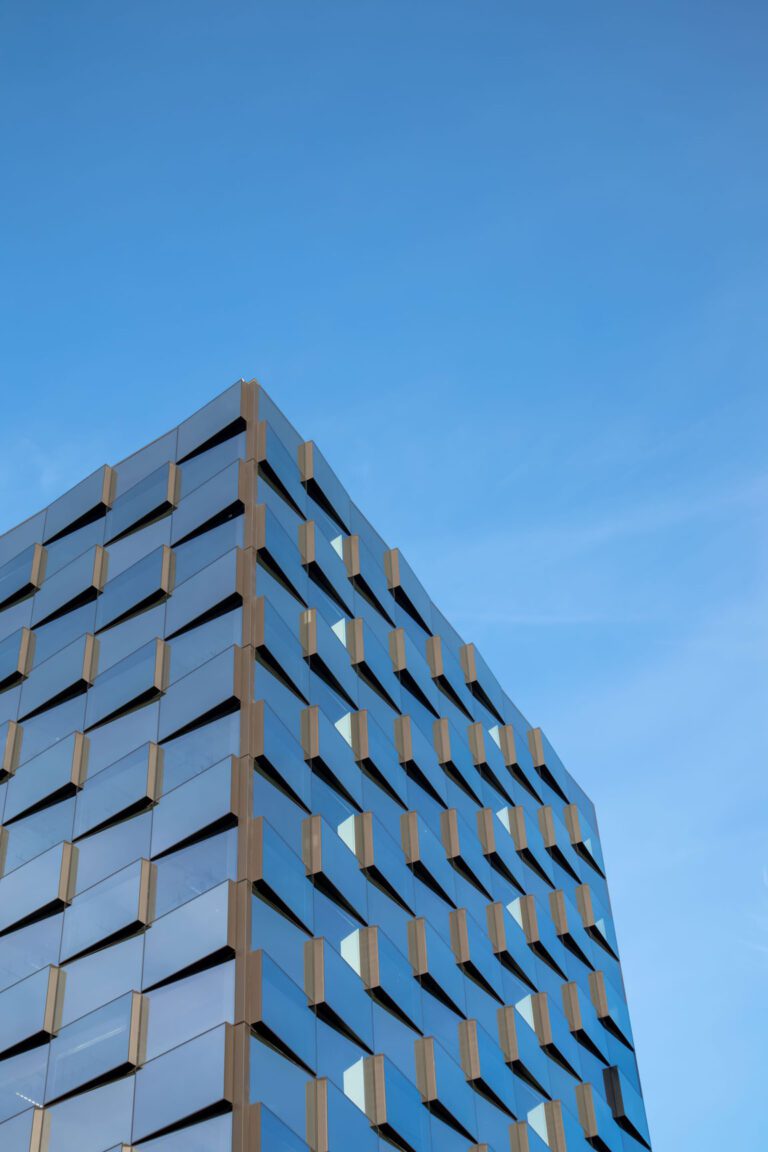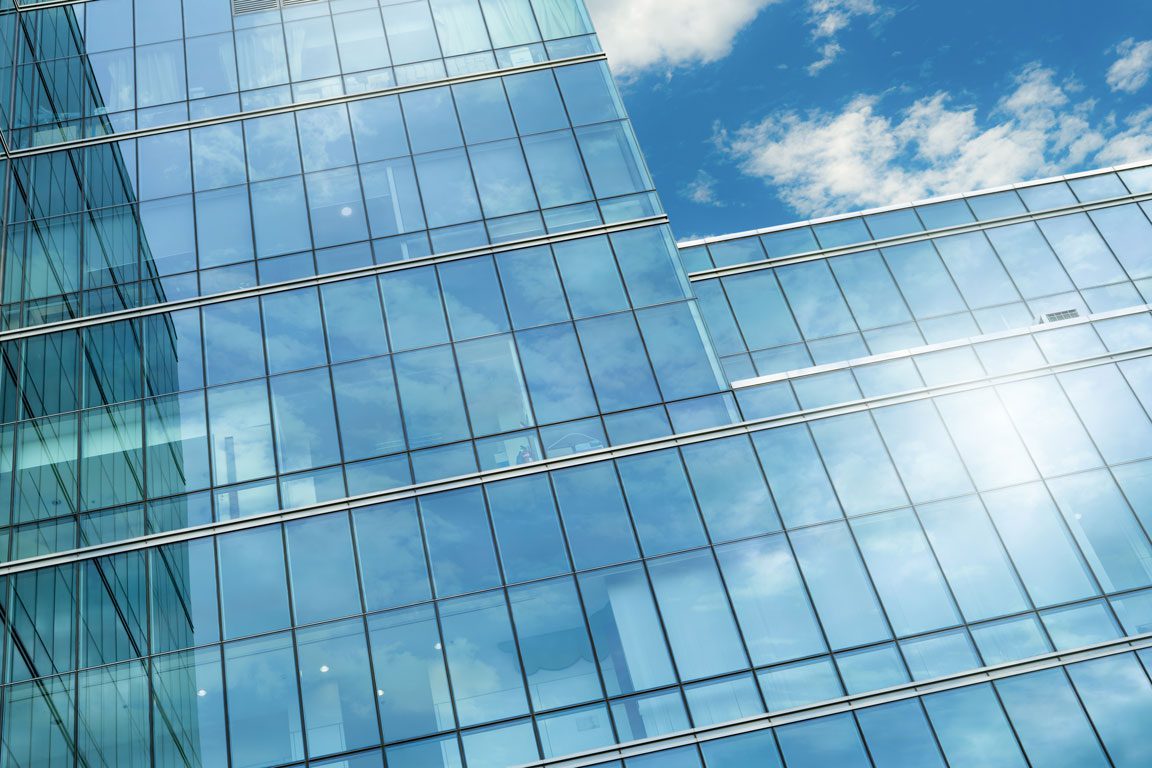The architectural glass industry is expected to grow by over 5% before 2030. And as this industry continues to grow, new innovations in architectural glazing will further proliferate the market. At Above All Store Fronts, our partnerships with top architectural glass vendors and manufacturers enable us to incorporate these innovative products into our projects.
This post provides information on some of the latest industry trends, giving a glimpse into the future of architectural glazing.
Smart Glass
Typically, smart glass is characterized by its ability to alter its transparency, opacity, or color in reaction to external stimuli.
The Benefits of Smart Glass
Privacy Control
Smart glass can transition from transparent to opaque with the flip of a switch, offering privacy when needed, such as in conference rooms or bathrooms.
Energy Efficiency
By controlling the amount of heat and light entering a building, smart glass can help regulate indoor temperatures, reducing the need for heating, cooling, and artificial lighting.
Aesthetics
Smart glass can be integrated into modern architectural designs, creating sleek and futuristic appearances in buildings.
Daylight Harvesting
It optimizes the use of natural daylight, reducing the reliance on artificial lighting during the day.
UV Protection
Some types of smart glass can block harmful ultraviolet (UV) rays, protecting interior furnishings and artwork from sun damage.

Self-Cleaning Glass
The Benefits of Self-Cleaning Glass
Photocatalytic Properties
Some self-cleaning glass incorporates photocatalytic materials that react with sunlight to break down organic pollutants on the glass surface.
Superhydrophilic Effect
When water comes into contact with self-cleaning glass, it forms a thin, even sheet that carries away dirt and grime, leaving the glass clean.
Reduced Maintenance Costs
Since self-cleaning glass requires less frequent cleaning, it can lead to cost savings in terms of maintenance and cleaning services.
Improved Aesthetics
Self-cleaning glass maintains its transparency and clarity, enhancing the appearance of buildings and allowing for better views from within.
Environmental Benefits
Self-cleaning glass can help reduce the use of cleaning chemicals and water, making it an environmentally friendly choice.
Longevity
By minimizing the buildup of contaminants, self-cleaning glass can extend the lifespan of architectural elements, reducing the need for replacements.
Versatility
Self-cleaning glass can be used in various architectural applications, including windows, façades, and skylights.

Sustainable Glass
Many of our trusted manufacturers offer sustainable architectural glass products comprised of post-consumer recycled materials. Additionally, eco-friendly manufacturing processes are implemented to further lower our carbon footprint.
The Benefits of Sustainable Architectural Glass
Thermal Insulation
High-performance glass with low-emissivity coatings enhances thermal insulation, maintaining comfortable indoor temperatures in all seasons.
Improved Indoor Air Quality
The use of low-VOC materials in production contributes to better indoor air quality and occupant health.
LEED and Green Building Certification
Sustainable glass can contribute to achieving Leadership in Energy and Environmental Design (LEED) certification and other green building standards.
Cost Savings
Lower energy consumption, reduced maintenance, and longer lifespans contribute to cost savings over the life of the building.
Property Value
Sustainable features, including energy-efficient glass, can increase the market value of properties.
Contact us today to learn more about the cutting-edge architectural glazing products and materials we can apply to your upcoming project.

